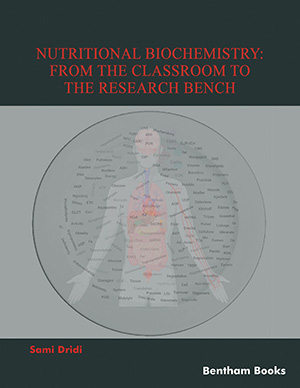
Abstract
Background: In addition to lifestyle, diet, environmental, and physiological factors, genetics also contributes to an increase in mitochondrial vulnerability. With depression, the hypothalamic, pituitary, and adrenal (HPA) axis are overactive, which is linked to higher CNS glucocorticoid levels. In recent years, topical drug delivery has been used on a priority basis compared to other drug delivery systems because of its specific site action and sustained release capacity. An emulsion gel is prepared by an emulsion incorporated into a gel by a gelling agent. Glucosamine Sulphate Potassium Chloride (GSPC) is used to treat osteoarthritis. It does this by increasing the production of proteoglycans, which can cause the cartilage to break down.
Objectives: The aim behind choosing the glucosamine sulphate potassium chloride for the management of Osteoarthritis (OA) is that it has many clinical investigations and has topical properties which are effective against osteoarthritis.
Methods: Osteoarthritis is a prevalent rheumatic musculoskeletal disorder. It is a pervasive disorder affecting people worldwide and can affect any joint, mainly the knees, hips, spine, and hand joints. The review is based on many studies extracted from Google Scholar, Google Patents, etc. Data from other sources were gathered to do further research on osteoarthritis.
Results: Extensive literature was studied about Glucosamine Sulphate Potassium Chloride. It has been shown that GSPC is effective against osteoarthritis, and also, some patents regarding GSPC have a therapeutic effect on making our joints healthy.
Conclusion: Topical formulations are widely used for better patient compliance, and emulgel is a good choice regarding viscosity and spreadability. GSPC is effective against osteoarthritis; many clinical studies have evidence of this.
Keywords: Nano-formulations, emulgel, topical drug delivery, glucosamine sulphate, glucosamine sulphate potassium chloride, drug.
[http://dx.doi.org/10.22159/ijcpr.2017v9i1.16628]
[http://dx.doi.org/10.5530/jyp.2021.13.17]
[http://dx.doi.org/10.1016/j.biochi.2016.07.008] [PMID: 27436182]
[http://dx.doi.org/10.1016/j.cclet.2018.10.037]
[http://dx.doi.org/10.1186/s12951-018-0392-8] [PMID: 30231877]
[PMID: 26451111]
[http://dx.doi.org/10.1007/s40089-014-0094-7]
[http://dx.doi.org/10.1038/nbt.3330] [PMID: 26348965]
[http://dx.doi.org/10.26452/ijrps.v11i1.1831]
[http://dx.doi.org/10.4155/tde.14.106] [PMID: 25690087]
[http://dx.doi.org/10.1186/1556-276X-8-102]
[http://dx.doi.org/10.15171/apb.2015.043] [PMID: 26504751]
[http://dx.doi.org/10.4103/0110-5558.72415] [PMID: 22247858]
[http://dx.doi.org/10.1016/j.jconrel.2013.06.030] [PMID: 23831051]
[http://dx.doi.org/10.1208/aapsj060326] [PMID: 15760111]
[http://dx.doi.org/10.5530/srp.2017.1.8]
[http://dx.doi.org/10.4172/2471-9935.100010]
[http://dx.doi.org/10.1186/ar1983] [PMID: 16879719]
[http://dx.doi.org/10.1159/000493390] [PMID: 30173215]
[http://dx.doi.org/10.1007/s00393-006-0122-8] [PMID: 17119899]
[http://dx.doi.org/10.1016/j.berh.2009.04.003] [PMID: 19591780]
[http://dx.doi.org/10.7326/0003-4819-74-6-911] [PMID: 4931742]
[http://dx.doi.org/10.7861/clinmedicine.17-1-65] [PMID: 28148584]
[http://dx.doi.org/10.1016/j.joca.2020.01.002] [PMID: 31945457]
[http://dx.doi.org/10.1136/annrheumdis-2019-215142] [PMID: 30987966]
[http://dx.doi.org/10.1136/pmj.79.933.377] [PMID: 12897215]
[http://dx.doi.org/10.1016/S0140-6736(19)30417-9] [PMID: 31034380]
[http://dx.doi.org/10.2337/dc19-1836] [PMID: 31988063]
[http://dx.doi.org/10.2202/1553-3840.1134]
[http://dx.doi.org/10.1155/2011/969012] [PMID: 21826146]
[http://dx.doi.org/10.1021/cg301276y]
[http://dx.doi.org/10.1093/rheumatology/kem026] [PMID: 17401134]
[http://dx.doi.org/10.1016/j.joca.2005.10.001] [PMID: 16300972]
[http://dx.doi.org/10.1016/j.joca.2006.06.010] [PMID: 16857394]
[PMID: 8135881]
[http://dx.doi.org/10.1007/s00296-012-2416-2] [PMID: 22461188]
[http://dx.doi.org/10.1016/S1063-4584(05)80007-X] [PMID: 11548225]
[PMID: 9638313]
[PMID: 20649060]
[PMID: 12610812]























